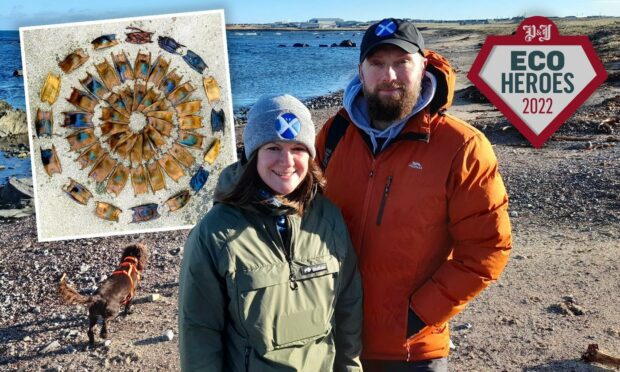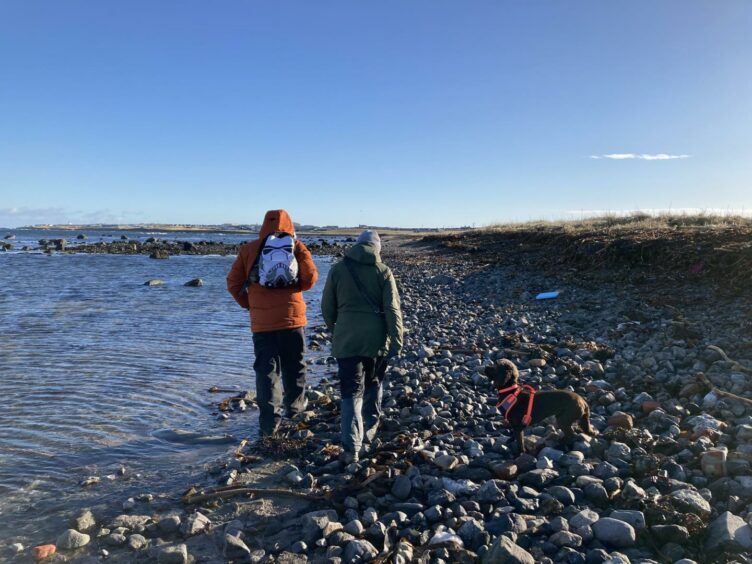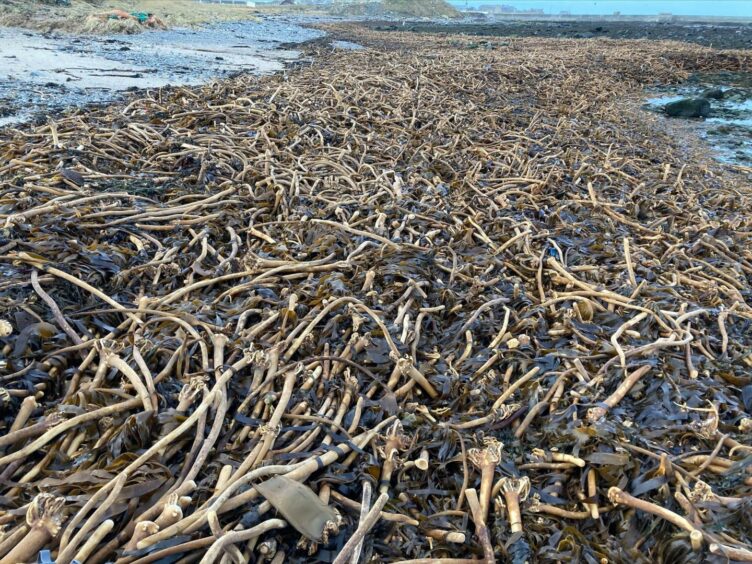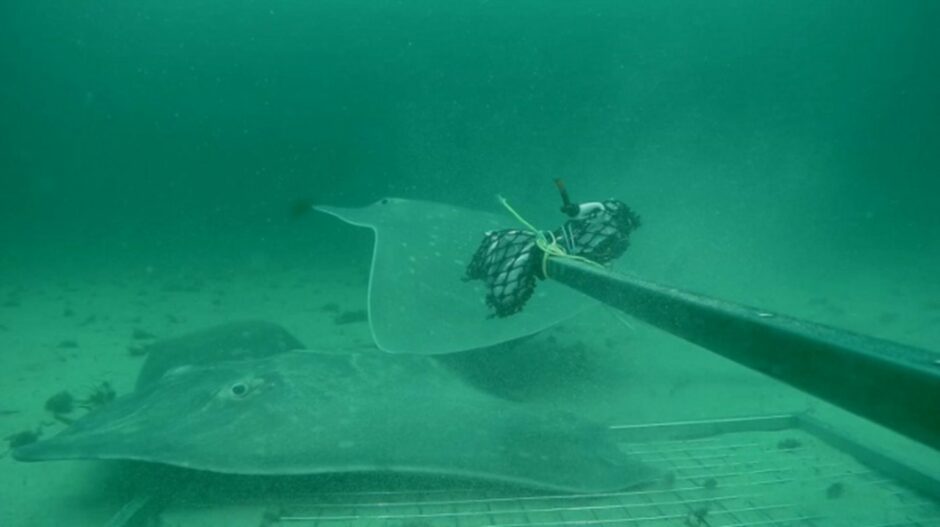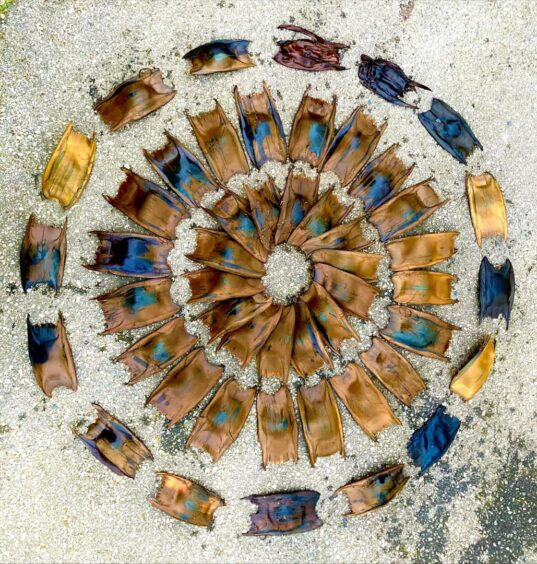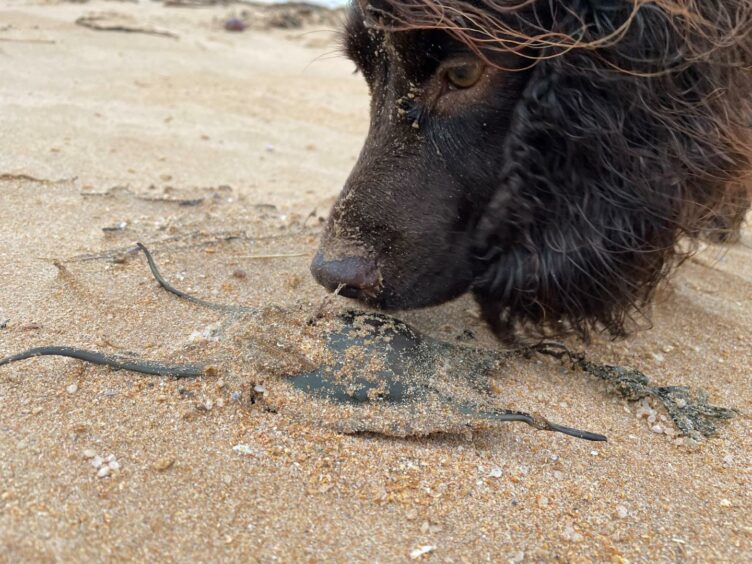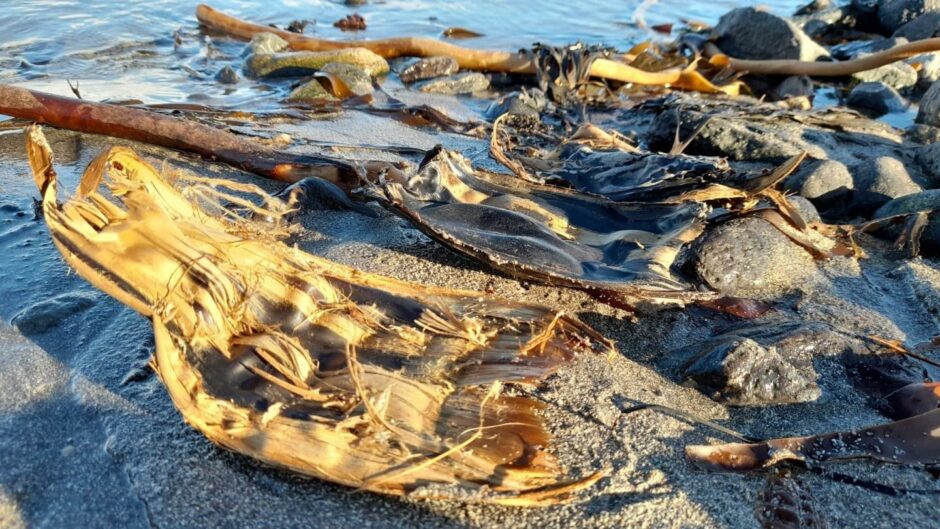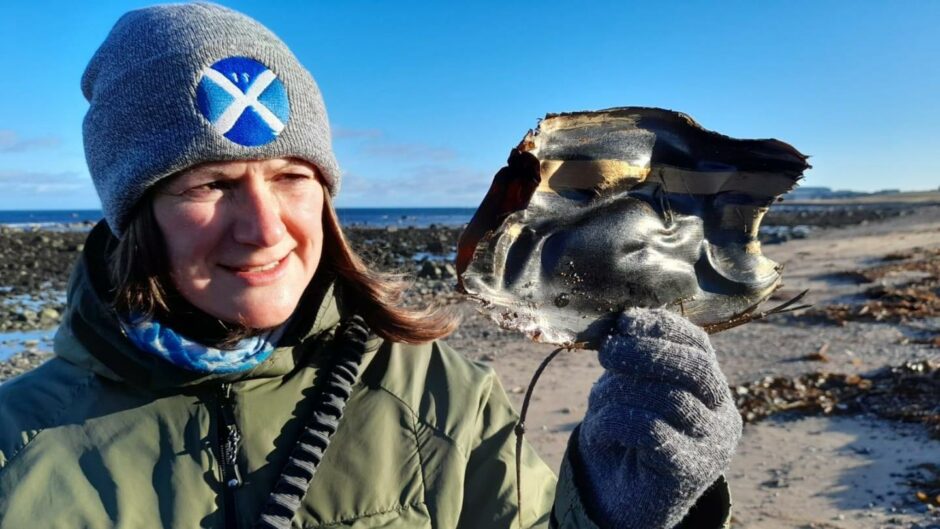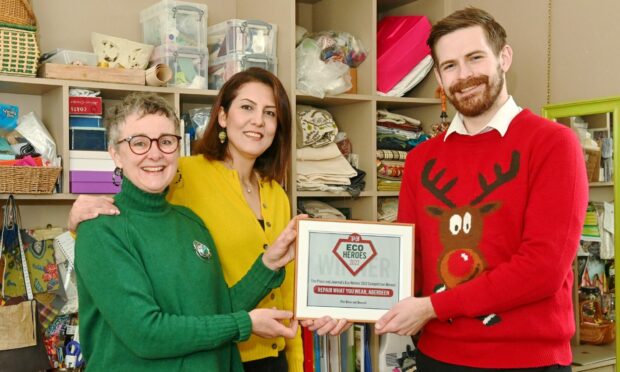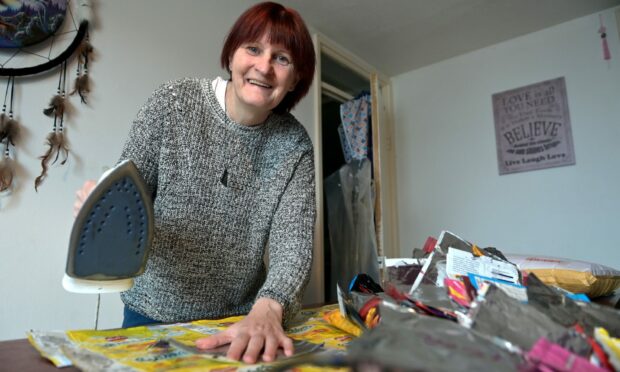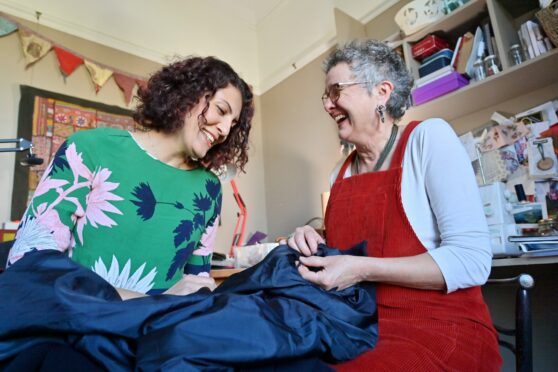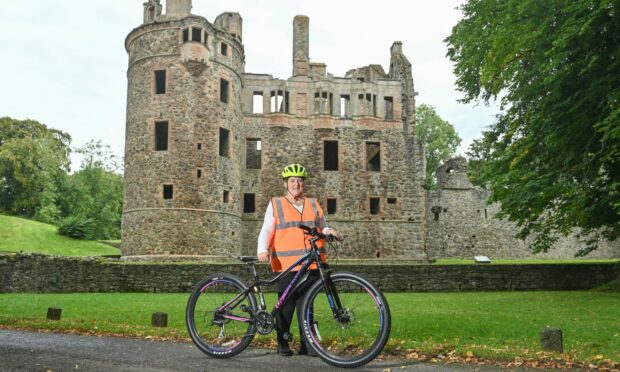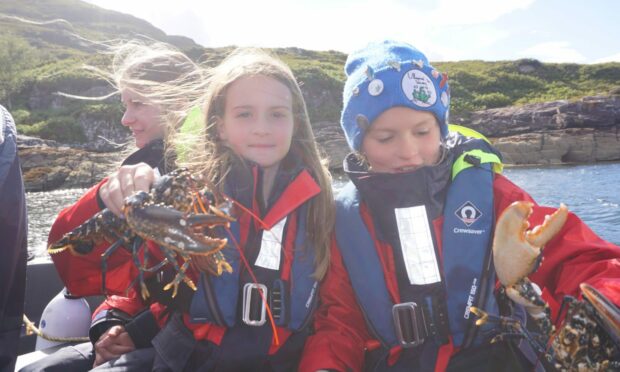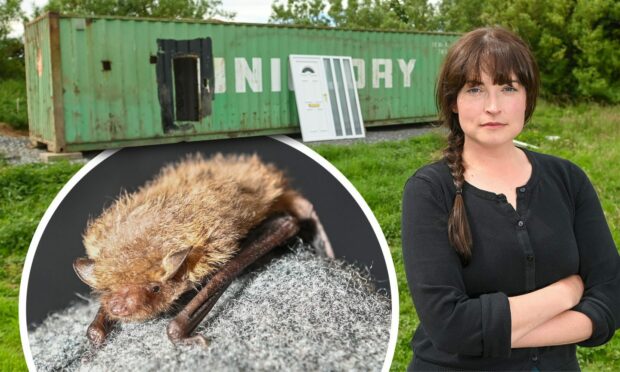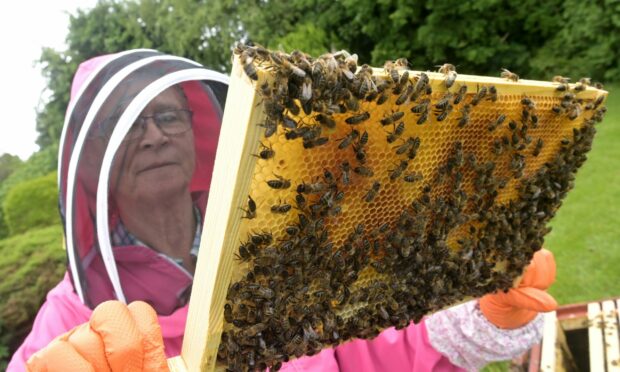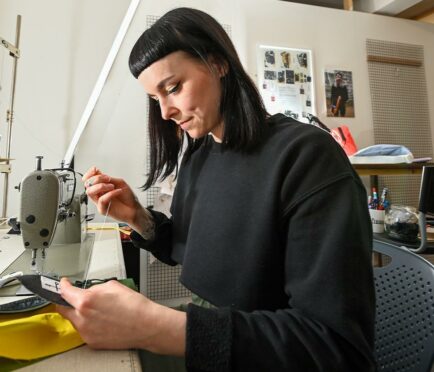Flapper skate are critically endangered and Scottish waters offer one of the last strongholds for these fish in the entire world. So why have most people never heard of them?
It’s true that they aren’t as cute as wildcats or as fluffy as a red squirrel, but the lack of public awareness of the species isn’t helping their plight.
This is where Chris Rickard and Dr Lauren Smith come in.
Tracking sharks on an empty beach in Fraserburgh
It’s a bright February morning and although it’s bright, the wind is blisteringly cold.
Somewhere just north of The Broch we are standing on an unnamed beach surrounded by the remnants of Storm Corrie.
Wading through the spongy kelp and broken bits of fishing gear spat out by the sea, it’s slow going.
“I’ve got one!” Chris said, pointing to the interminable tangle of seaweed at his feet.
He’s pointing to an egg case, sometimes known as a mermaid’s purse, which virtually blends into its rubbery surroundings.
Quickly taking out his phone, he snaps a photo of the egg case in situ and opens what3words to mark the location.
The egg case is then placed into an Asda bag for life.
“It’s very scientific,” he said, nodding at the bag.
He’s joking, but it is. Tracking the sightings and locations of these egg cases might just save flapper skates from extinction, but Chris and Lauren can’t do it alone.
What is a flapper skate?
Flapper skates are flat, diamond-shaped relatives of sharks which can grow to have a three-meter wingspan.
🎉 Last week we successfully filmed critically endangered flapper skate off the west coast of Scotland, footage was obtained via BRUV & whilst SCUBA diving which was INCREDIBLE!!! @DiverChrisR @JDScuba @VetPaulRamos @CinematicaMedia @jackfisherfilms @thefyneseadog @SharkTrustUK pic.twitter.com/RYHjuHMg1W
— Dr. Lauren Smith (@SaltwaterlifeUK) November 2, 2021
Flapper skate are slow growing and late to mature, making them highly susceptible to overfishing.
They used to be known as the “common skate”, but it doesn’t take a genius to work out why they’ve gone from common to the verge of extinction in just a few decades.
“They are no longer common, in fact they are very uncommon,” said Chris, co-founder of Shark and Skate Citizen Science Scotland (SSCSS).
“And when you do find them, they are mostly found on the west coast of Scotland, which is why it’s really exciting that we’ve started finding flapper skate purses washing up from the Moray Firth here on the east coast.”
It has been illegal for fisheries to target flapper skate commercially since 2009, but the large size of the species has led to high levels of accidental capture by the fishing industry.
They like to hang out on sandy or muddy seabeds, which makes them difficult to spot – and count.
So the best way to keep track of this highly elusive species is to follow the trail of egg cases left in their wake.
How to find an egg case (or mermaid’s purse)
Flapper skate are the largest skate of their kind and, by extension, their egg cases are pretty big too.
Measuring in at roughly 30cm with curved edges and protruding horns on each end, these cases are deposited by the mother with an embryo inside.
“Then it just sits there on the seabed for 18 months until it hatches and the baby swims off,” said Chris.
“And when that happens, the purse gets slightly lighter in the water and more able to end up on the beach after stormy weather, like here near Fraserburgh.”
To find one, Chris recommends searching along the high tide mark, particularly after a storm.
“The fresh high tide mark is a good place to look for fresher purses,” he said.
“The historical high tide mark which is usually further up the beach will have slightly more dried out cases, a slightly different colour worn thanks to the sun and action of the waves.”
If you find one, take a photo of it and a note of the location. Then add it to the Shark & Skate Citizen Science Scotland Facebook page, where hundreds of other beachcombers from around Scotland are already adding their finds.
This allows Chris and Lauren to track sightings and improve general understanding of the behaviours and habits of the species.
How to get involved
The more people who contribute, the bigger and better the picture of Scotland’s flapper skate population becomes.
Lauren and Chris have big plans to expand the group, turning it into a standalone website in which people can map and track skate and egg case sightings across Scotland on their own.
“The great thing about all the information we get from the public is that it’s all considered citizen science data,” said Lauren, who is a marine biologist and diver alongside her volunteer work with SSCSS.
“So that is normal people, going out on the beach and informing us about certain species and it’s brilliant.”
Without normal folk contributing, the project would fall apart, she explains. “Chris and I can’t cover every beach, every day in Scotland, we just can’t do it.”
The data which is gathered will help inform conservation management practices to try and minimise human impact on flapper skate and maintain their habitat.
Ultimately the goal is to protect the species and slowly ease it out of the critically endangered category.
“Finding an egg case doesn’t get old,” said Lauren.
“We still get excited, Chris and I, when we find an egg case and get a little rush of excitement.”
Now, they want you to try it.
Found an egg case? Report it here
Chris and Lauren are the first entry to the P&J’s Eco Heroes competition, where you could win £500 towards your own environmental project. To enter, email us at: environmentandtransport@ajl.co.uk and find out more.
